y''' + 41y'' + 360y' + 900y = 600x' + 1200x;
y(0)= 2 ; y'(0)= 1 ; y''(0) = -0.05
How can I solve this equation using the ODE45 function?
I tried this:
==>
function dydt=f(t,y)
dydt = [y(2) ; y(3) ; -41*y(3)-360*y(2)- 900*y(1)]
==>
clear all;
timerange=[0 1.4]; %seconds
initialvalues=[2 1 -0.05];
[t,y]=ode45(@dydt, timerange, initialvalues)
plot(t,y(:,1));
But I need put the X part in the equation - I don't know how...
